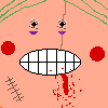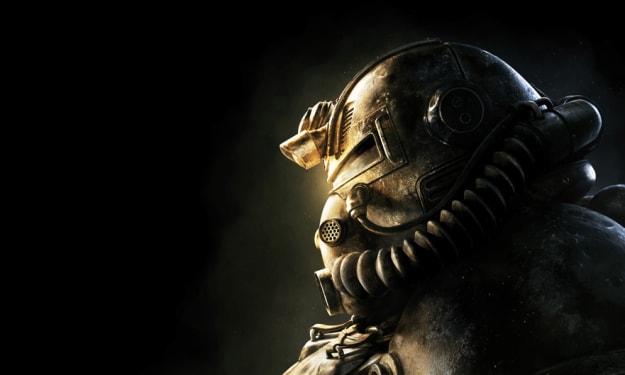
Let's face it: visuals were hardly a ZX Spectrum game's selling feature. It wasn't every day that someone would pick up a tape and exclaim, "WOW, look at the visuals on this game!!" - Even before flicking to the back of the box, Spectrum players knew what type of visuals they were likely to receive.
What made matters worse was that the publishers often included images of not just the Spectrum version, but also the competitor Commodore 64 version, and even the Atari ST and Amiga versions, which were miles ahead in terms of visual capability. Some cassette inlays went much farther, disregarding misleading advertising by showing images from an entirely other system (one with considerably superior graphics) and refusing to display any Speccy screenshots at all! To be honest, there were moments when I'd glance at these comparison pictures and wonder, "Why can't my game look like *that*?" I'd still purchase the game since I knew what to anticipate and, of course, I could always use my creativity to improve it. I knew what was going to be enjoyable no matter what version of screenshots I was given. But what prompted the Spectrum owner to choose the box in the first place?
Without YouTube or the internet, and without television advertising for games, the cover art had to catch your attention. Yes, there were Spectrum magazines full of screenshots and reviews, but when you turned the page to reveal a full-page color advertisement for a game, it was dominated by incredible game cover art, with only a few small screenshots of the game (if any at all) usually subtly placed at the bottom with the other unimportant stuff.
When I speak about cover art, this was not computer produced 3D CGI at the level seen nowadays; these were beautifully drawn or hand painted - this was true skill and time and effort poured - nothing computer assisted or digital. In certain situations, felt tip pen strokes, brush markings, or pencil lines might be seen. This was true art. When you walked into a computer store and saw a sea of cassette boxes, each with its own cartoon cover, painted hero scenes, or movie poster type graphics, you knew you were in for a treat, even if the reward was the time you spent looking at them. There were titles you'd never heard of before, titles with no screenshots on the back of the box! However, this contributed to the mystery around this week's game buy. Even without screenshots, the cover art convinced you it was worth the bet as you looked at the image on the front of the box on your bus ride home (...albeit the gamble didn't always pay out.)
These occasionally stunning graphics drew you in and enticed you. You wanted to open the pages and dive into the story to be the character emblazoned on the front, just like the art on the cover of a book; the cover set the tone for the incredible adventure you were about to embark on... which ended up being a number of basic looking pixelated shapes awkwardly moving around a screen to the soundtrack of a few bleeps and white noise, but that's not the point.
Graphic designers nowadays could easily take a frame from a photo-real texture mapped game sprite and arrange it in any position or stance, and that would be enough to sell the game. In the days of the Spectrum, however, in its stead would stand an actor in action positions dressed up as characters from the game! Of course, I'm referring to the iconic cover of "Barbarian." It added a level of realism to the point of sale that is seldom seen nowadays - yeah, and boobs. Protesters were so focused on the risqué (by today's standards) cover image that no one mentioned that in the game, you hack people's heads off with a sword, only to kick them across the screen! To be honest, the sort of person who complains about a bikini-clad female on the front of a computer game box probably didn't know how to launch the game in order to be horrified by the beheading.
Grand gestures and attention grabbers were required in the early days of computers, of course, to counteract the very unrealistic game and often terrible gameplay of a title - generally, to be fair, the movie-licensed ones.
If a movie was a major smash, any sort of game of any quality would suffice - often with no real relation to the narrative of the movie, and forget pictures - they're unnecessary! ⨠Get the rights to publish a game based on the international epic film "Jaws," place the iconic Shark on the cover, emerging up toward the swimming girl, and you'll sell a lot of copies. But what about the game? Simply change the X's and O's in a game of sharky Tic-Tac-Toe for Shark Fins and Girls Faces - that should do it! (By the way, it wasn't the game version of Jaws; I simply made it up as an extreme example - the real game was *much* less crucial to the storyline.) The goal was, as long as it featured the huge Hollywood cover image, it would sell like hotcakes no matter what. However, gamers were disappointed, and over time, they learned to double-check pictures and reviews of movie-licensed games to ensure they weren't being duped.
There were excellent games and poor games, accurate screenshots and deceptive images, and no screenshots at all; yet when you bought a Spectrum game, you were in for a fresh experience (good or bad) that began the minute you laid eyes on the cover art.
How did a game attract your interest while it was lying on the shelf in the 1980s and early 1990s, when visuals were not the best? The cover design! This post takes a subjective trip into a period when the screen photos on the box were not usually those of the system it was marketed for, filled with personal experience and comedy.
About the Creator
Rahau Mihai
Hi! Come to my profile and you will see really useful things or something to relax you !






Comments
There are no comments for this story
Be the first to respond and start the conversation.